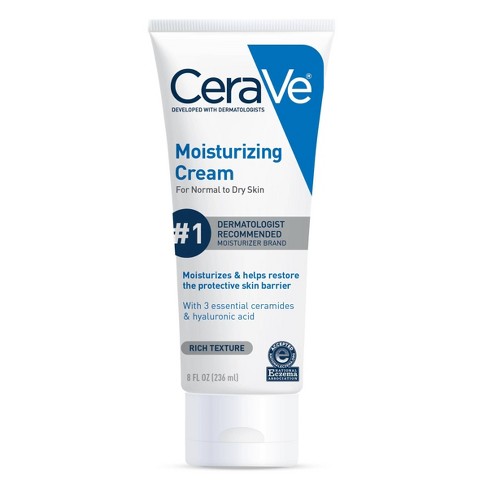7 Trends Daily
Stay updated with the latest insights and trends across various sectors.
Moisturizer Mysteries Unveiled
Discover the secrets behind the perfect moisturizer! Unveil mysteries for glowing skin and unlock your best beauty routine today!
The Science Behind Hydration: How Moisturizers Work
The Science Behind Hydration is a crucial topic for anyone looking to maintain healthy skin. Moisturizers work primarily by creating a barrier on the skin's surface, which helps to reduce transepidermal water loss. This barrier is often achieved through occlusive agents like petrolatum and dimethicone, which physically block moisture from escaping. Additionally, many moisturizers contain humectants such as glycerin and hyaluronic acid, which attract water from the environment and deeper skin layers, effectively increasing hydration levels. By combining these components, moisturizers not only provide immediate relief to dry skin but also support the skin's natural ability to retain moisture over time.
Understanding how moisture is maintained is essential for effective skin care. Moisturizers can be categorized into three main types: occlusives, humectants, and emollients. Each plays a unique role in hydration. Occlusives form a protective layer on the skin, while humectants draw moisture in, and emollients smooth and soften the skin. Together, they create a synergistic effect that enhances the skin's overall hydration levels. Regular use of the right moisturizer can greatly improve the skin's texture and elasticity, leading to a more radiant appearance.

Decoding Ingredients: What’s Really in Your Moisturizer?
When it comes to skincare, understanding the ingredients in your moisturizer is crucial for achieving radiant skin. Many moisturizers boast a list of hydrating ingredients that can leave consumers overwhelmed. Key components like glycerin, hyaluronic acid, and shea butter are often highlighted for their ability to attract and retain moisture. However, it’s important to recognize that not all ingredients are created equal. Some may contain parabens, fragrance, or other potential irritants that can harm sensitive skin. Being able to decode the ingredient list empowers you to make informed choices for your skin type and concerns.
Moreover, the order of ingredients can also be telling. Ingredients are listed in descending order by concentration, meaning the higher an ingredient appears on the list, the more of it is present in the formula. Antioxidants, such as vitamin E or green tea extract, often sit higher up in premium moisturizers, signifying a focus on skin health. Additionally, consider the presence of emollients and occlusives which work to create a protective barrier on the skin. By paying close attention to these details, you can better understand what’s really in your moisturizer and how it can impact your skincare routine.
Moisturizer Myths: Separating Fact from Fiction
When it comes to skincare, moisturizers often fall victim to various myths that can confuse consumers. One common myth is that oily skin does not need moisturizer. In reality, even oily skin types require hydration to maintain a healthy balance. Skipping moisturizer can lead to increased oil production, making your skin even oilier. It's crucial to choose a moisturizer that is lightweight and non-comedogenic to avoid clogging pores.
Another prevalent myth is that higher-priced moisturizers are always more effective than budget-friendly options. However, effective hydration often comes down to the ingredients rather than the price tag. Many affordable moisturizers contain powerful hydrating ingredients like hyaluronic acid and glycerin that can deliver results comparable to their expensive counterparts. Thus, it's essential to focus on the ingredient list rather than let price dictate your skincare choices.